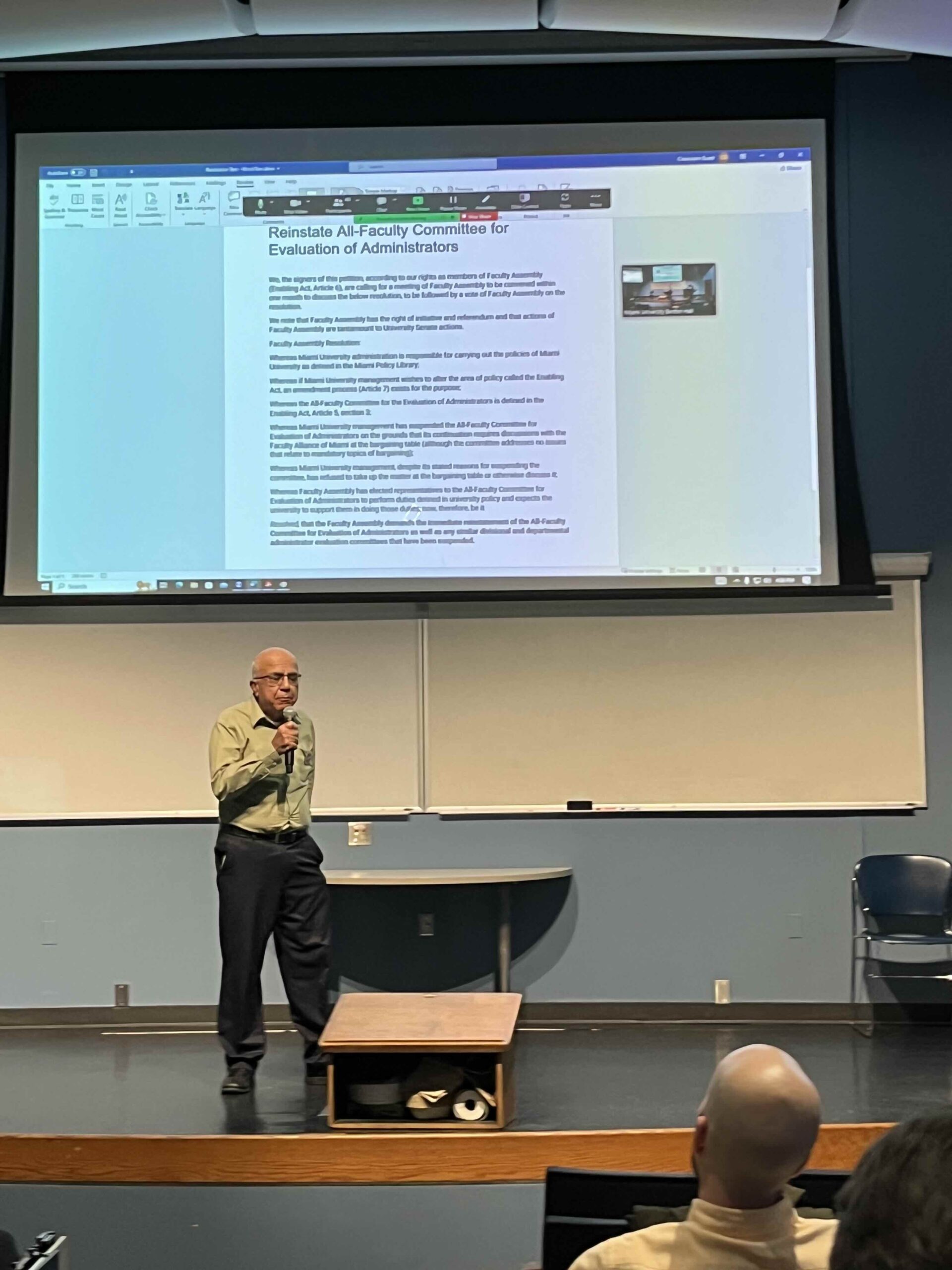The administration’s “rationale” for terminating the process of evaluating administrators is as follows: Since FAM represents faculty for negotiations related to wages and employment, and therefore, Miami may not engage in soliciting individual faculty input. This has no legal, rational, or moral standing. As you will note, it says “may not engage..,” but does not say “shall not.” Therefore, we will examine why administrators should continue to be assessed by faculty. There are many instances where universities with unions engage in soliciting input from faculty regarding the evaluation of administrators.
Let me give you one example: This morning, I spoke with the chair of the Mechanical Engineering department at Southern Illinois University, where I served for 21 years before coming to Miami in 2003. SIU faculty are represented by a union, and that by itself does not prevent them from assessing administrators. In fact, the SIC chair mentioned that a recent assessment survey form had questions about whether the existing dean should continue for another year or be reappointed. In addition, assessment and evaluation are carried out in all academic settings, be they students, faculty, or staff.
I have served as chair for 16 years at Miami and went through six evaluations. My wife and children tell me that the process has made me a better human being. In a nod to David Letterman, here are the top 10 reasons why we should evaluate administrators:
- Shared Governance: In many universities, shared governance is a fundamental principle that involves faculty, administrators, and sometimes students in decision-making processes. Faculty evaluation of administrators ensures that this principle is upheld, allowing those directly involved in academic activities to have a say in the leadership and direction of the institution.
- Academic Perspective: Faculty members bring a unique perspective on academic matters, teaching, research, and the overall mission of the university. Involving them in the evaluation of administrators ensures that these leaders are assessed in terms of their impact on academic excellence and the fulfillment of the university’s educational goals.
- Quality of Leadership: Faculty input provides valuable insights into the effectiveness of administrative leadership. It helps to assess how well administrators support faculty in their roles, promote a positive academic environment, and contribute to the overall success of the university.
- Communication and Collaboration: Administrator evaluations foster open communication and collaboration between faculty and administrators. Constructive feedback can lead to improvements, and involving faculty in the evaluation process can contribute to a more transparent and collaborative university culture.
- Accountability: Administrator evaluations establish a system of accountability. Administrators, like any other employees, need to be accountable for their actions and decisions. Regular evaluations ensure that administrators are held to a certain standard and that their performance aligns with the goals and values of the institution.
- Professional Development: Feedback from faculty evaluations can be used for the professional development of administrators. Identifying strengths and areas for improvement allows administrators to refine their leadership skills and better serve the university community.
- Trust and Confidence: Inclusion of faculty in the evaluation process can enhance trust and confidence in the administration. When faculty members feel that their input is valued and considered in decisions related to leadership, it fosters a sense of trust and collaboration within the university community.
- Transparency: Transparency in universities fosters trust among stakeholders, ensuring open communication and accountability. It enhances academic integrity, promotes a culture of fairness, and enables informed decision-making for both students and faculty. Ultimately, transparency strengthens the educational institution’s reputation and effectiveness
- It’s the Right Thing to Do: Evaluating administrators in universities ensures accountability, promoting effective leadership and organizational improvement. It provides a mechanism for stakeholders to voice concerns, fostering a culture of responsiveness and adaptability. Regular evaluations contribute to a dynamic and responsive university environment, aligning leadership with the institution’s educational goals and values.
- Tradition: As the Fiddler on the Roof said: “It is a tradition.”


Leave a Reply